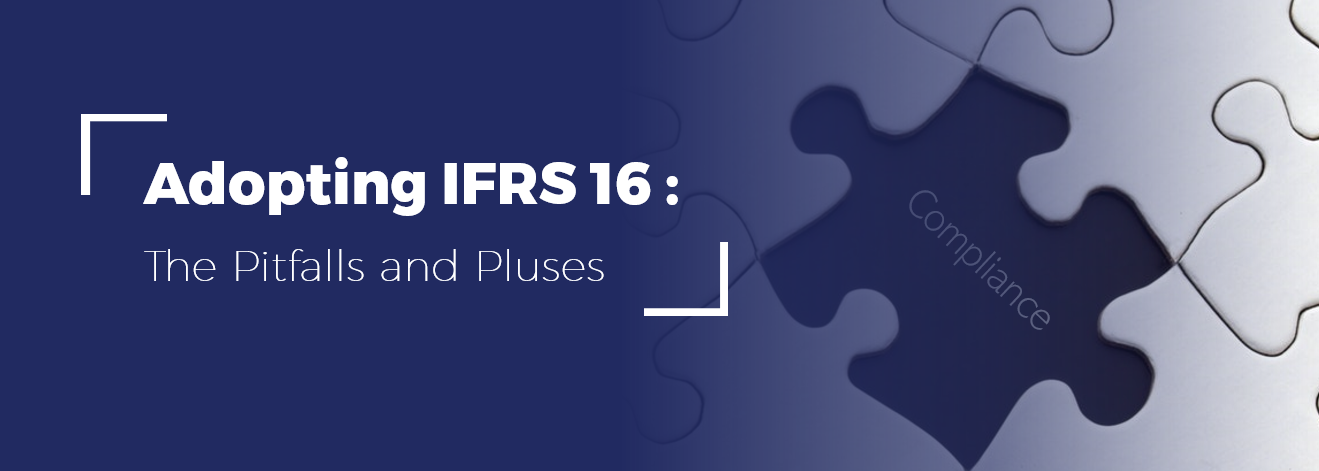Adopting IFRS 16 – The Pitfalls and Pluses
Updated 16th January 2023 | 5 min read Published 22nd May 2019

Every business will have been aware of the introduction of IFRS 16 for accounting periods beginning on or after January 1st, 2019, even if that deadline does not necessarily apply to them as a Public Sector entity or SME.
The new lease accounting standard can still be relevant to any business as the benefits of implementation arguably far outweigh the challenges of compliance.
In this article, we take the experiences encountered by Innervision and its clients as they have successfully transitioned to IFRS 16 and ASC 842 and document them together with the spin-offs that have manifested through the adoption of the standards by these clients. Whether your business is compelled to embrace IFRS 16 or you are just looking to the future it is as well to avail yourself of the pitfalls and pluses to overcome and be enjoyed respectively.
A brief recap
With the adoption of the new lease accounting standard, billions of dollars of leased assets are set to be added to the balance sheets of businesses across the globe. The IASB together with FASB published details of the new standards, together with available approaches, expedients and exemptions back in 2016 and, over the past few months especially, accounting departments everywhere have been preparing to not just understand the relevant standard from the view of implementation but also to be able to quantify the impact of compliance on their financial statements.
Those businesses which have teamed with lease consultancies such as Innervision have been able to piggy-back on the experiences gained from multiple implementation projects and even before embarking on their project have been aware of the pitfalls and pluses that will present themselves – they’ve been able to minimise the downs and maximise the ups!
Avoid the pitfalls
There is a myriad of challenges facing entities when adopting the new lease accounting standards, ranging from ensuring the completeness and accuracy of a lease portfolio, identifying embedded leases, data collation and validation to the human and capital resources required to effectively transition. Below are some considerations companies may wish to examine that will help mitigate these obstacles:
- Understand the new leasing standard that is applicable to your business or businesses.
- Appoint a project leader to own and implement the compliance program.
- Consult with experienced lease expertise by calling on lease consultancies or auditors.
- Invest in the program – not just time and internal personnel but budget expenditure to allow the adoption of a proven, referenceable software solution – invest in the future!
- Impact modelling will soften the surprises that adoption may throw up for your investors, potential stakeholders and lenders in the form of adjusted financial metrics, gearing, ratios and EBITDA.
- Alert the whole business of the priority of compliance and the part to be played by everyone in identifying assets, locating lease documentation and pooling or centralizing near future expiry options.
- Set the IBR or understand the implicit rates in each of your operating leases – have a policy, have it agreed with auditors and try and stick to it.
Enjoy the pluses
Although many organisations view the transition as an unwanted and complex hindrance, it is important to understand that there are several advantages and benefits that can be achieved if a business approaches the project in the correct manner. Some of these headline benefits include - Improved lease portfolio visibility, the ability to develop enhanced processes and controls, help in identifying data and systems gaps, provide an opportunity for enhanced proactive lease management and driving savings and compliance. Below we consider the advantages that can be enjoyed when a company uses the transition to its benefit:
- Single accounting treatment of all lease types going forward – simplicity
- Improved lease portfolio management will inevitably lead to
- Managed end of term
- Improved returns performance
- Better lessor management and relations
- Potentially improved terms and conditions going forward through leverage
- A centralised, accessible pool of lease data available to all authorised to view
- Renegotiate leases, challenge lessors, redeploy underutilised assets
- Cancel all of those long-running leases on equipment no longer in use
- Fixed extension rentals for new leases (finance or operating need no differentiation)
- Chance to assess and compare the interest charges being levied by lenders
- Use the exemptions available on short term leases and low-value assets
- With the right software solution, you will have
- The journals generated for your general ledger
- A full audit trail covering the history of each asset and lease (acquisition, updates, returns, refresh and buy-out)
- Privileged password access to one cloud-based centralised lease database for all concerned personnel within the organisation
- A global view of assets across the entire company
- Asset location, lease liability and lease expiry reports amongst others
- Automatic generation of termination notices and extension options
- Uploads and downloads from and to Excel.
- Transparency and clarity of financial liabilities which is apparent to potential investors, shareholders, lenders and other interested parties understanding the performance of your business and how it compares to others in your sector.
To Summarise
There will always be unforeseen pitfalls and some even we have yet to come across. Likewise, there will be pluses that are unique to your business but to realise the very best of outcomes it really is necessary to step off with the right foot.
Take the issue seriously enough to appoint an owner, allocate a sufficient budget, set realistic milestones and explore, identify and acquire the right software solution. Cutting corners will not result in the benefits from compliance and cutting corners will very definitely mean climbing time and time again out of the pits into which you will inevitably fall.
Keep your internal staff, management, auditors, lenders, stakeholders, yourself and even your lessors happy, informed and able to experience a painless compliance with minimum pitfalls and maximum pluses by following the well-trodden path of so many Innervision clients – discover LOIS Lease Accounting today.
For more information on the effects and impact of IFRS 16 and for guidelines on how to comply today then download Innervision's 7 Step Guide to lease accounting compliance below:
Disclaimer: this article contains general information about the new lease accounting standards only and should NOT be viewed in any way as professional advice or service. The Publisher will not be responsible for any losses or damages of any kind incurred by the reader whether directly or indirectly arising from the use of the information found within this article.






